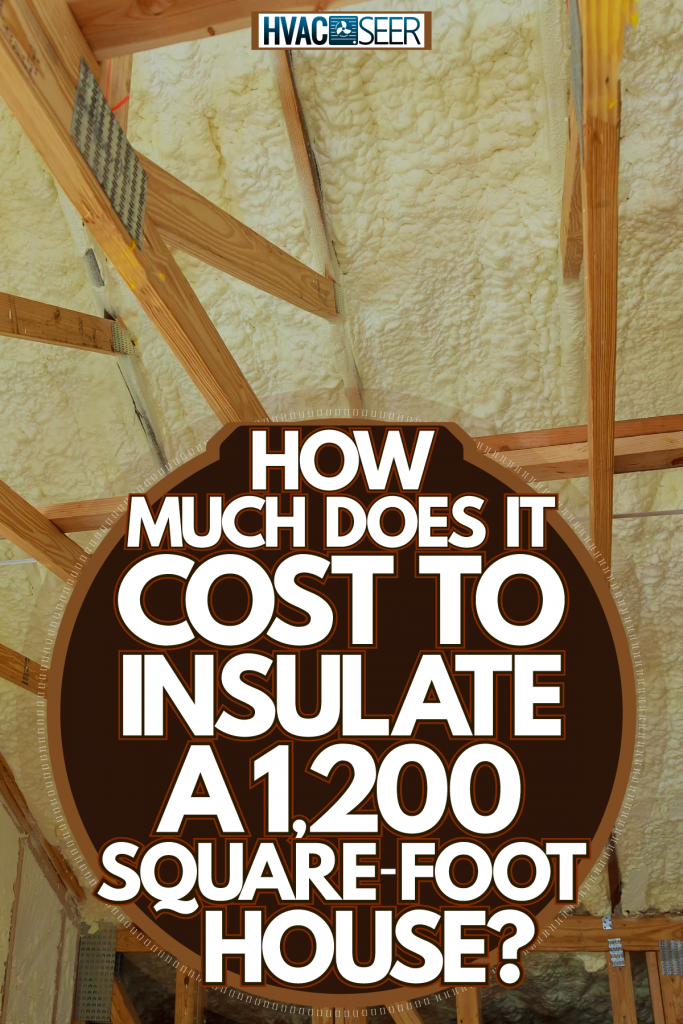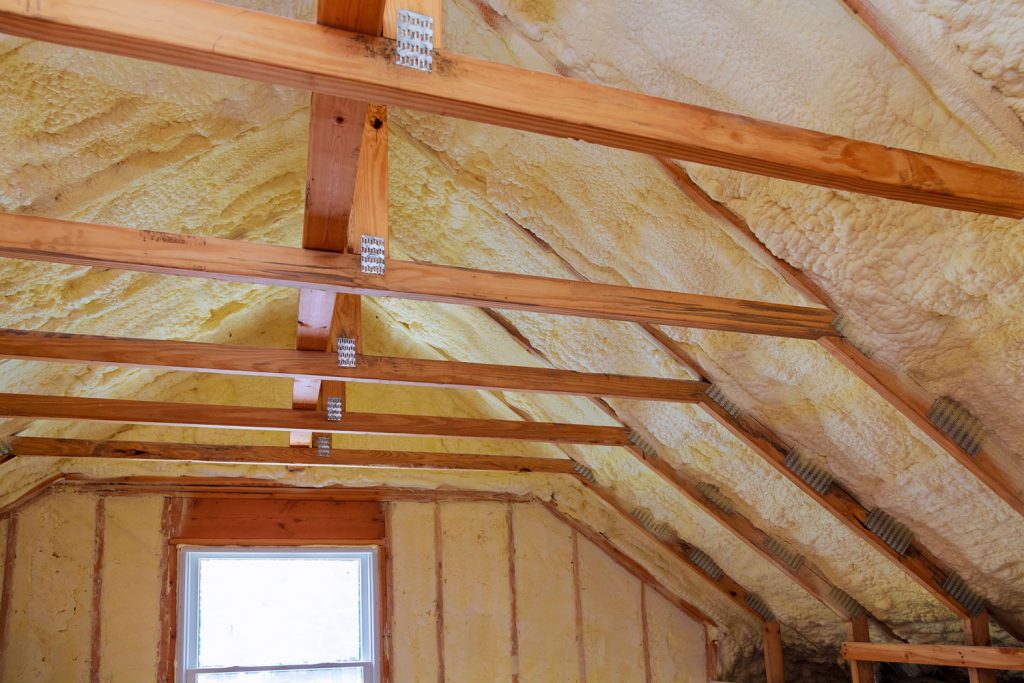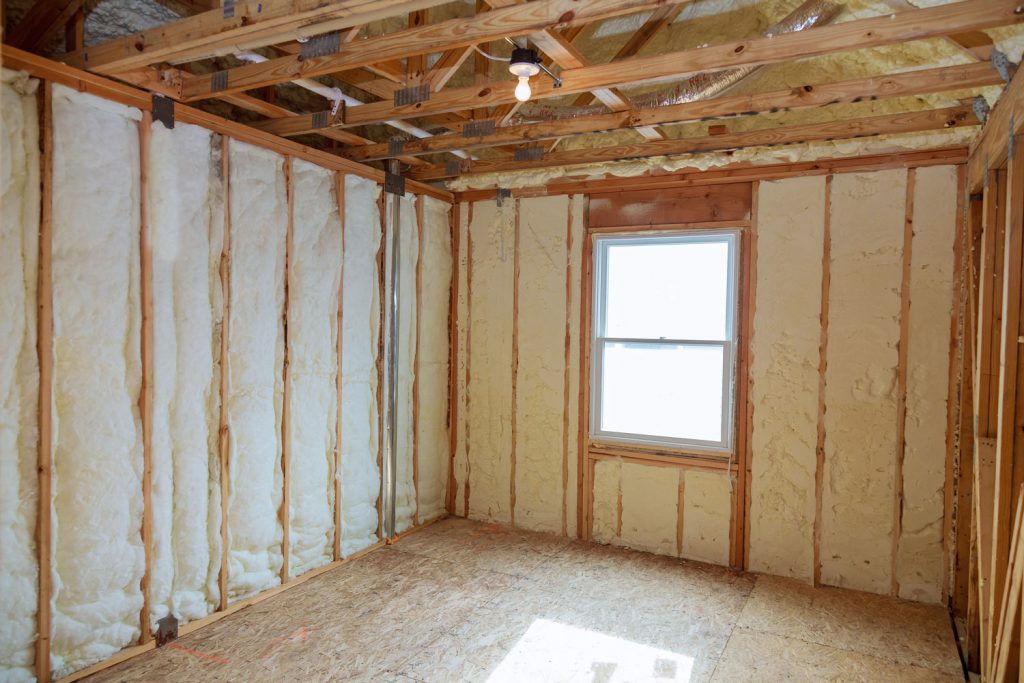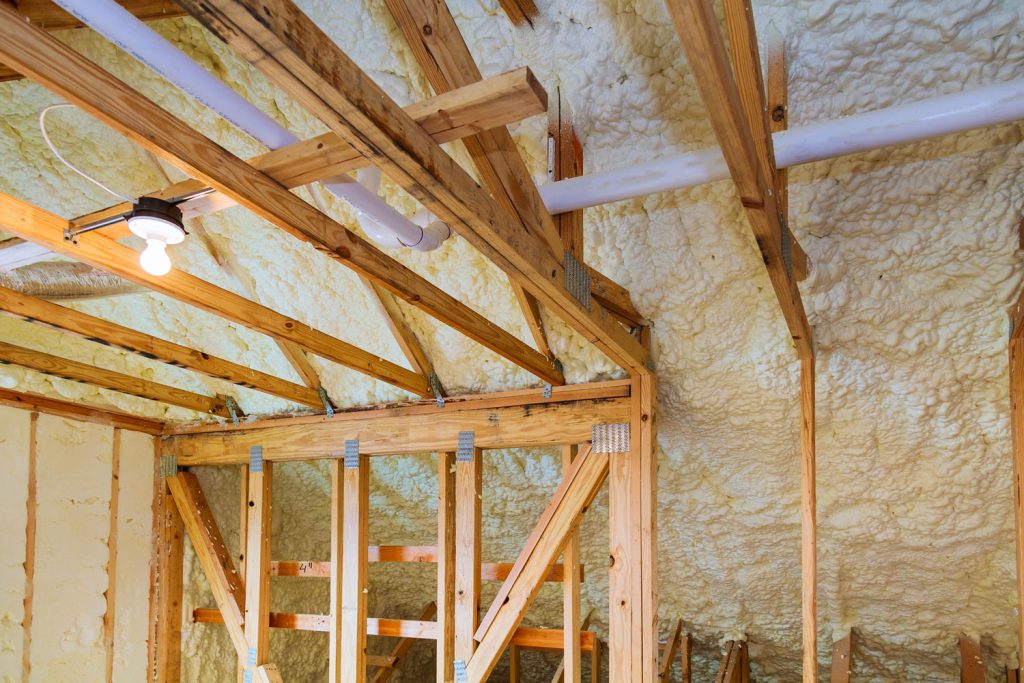Home insulation is essential to regulating indoor temperatures and providing a certain level of comfort. Many local and state building codes also require specific insulation levels. But how much does it cost to insulate a 1,200 square-foot home? And which types of insulation are the cheapest? We have looked into insulation prices, and in this post, we will answer these questions for you.
The cost to insulate a 1,200 square-foot home will vary depending on the type of insulation you use and whether or not you outsource the job to a contractor. Expect to pay about $0.30 to $1.12 per square foot for fiberglass batt or blow-in cellulose insulation. This means that you can expect to pay about $360-$1,344 or more if you perform the job yourself. Expect to pay about double that if you hire a contractor to do it.
Before deciding the best insulation for your home, it's helpful to consider your budget for the project. For example, do you plan to install the insulation yourself, or will you contract the job to a home builder? You'll also want to consider the location of the insulation, as attic and basement insulation can be an easy DIY project. In contrast, interior wall insulation may be more complex, in which case a contractor may be best suited for the job. Continue reading to learn more.

How do I calculate how much insulation I need for my walls?
To calculate the insulation you'll need for the walls, you'll first need to measure the exterior and interior sections of the wall. For the task, you will need measuring tape, a calculator, a pencil, and paper.
Measure the width of the exterior walls by measuring the interior walls and the wall cavity. Be sure to start at the top of the floor joists and go all the way down to the floor. To get the total square footage, multiply the length and width of the walls.
When measuring around the windows, be sure to subtract them from the total square footage of your walls. Then follow the same steps for the doors.

How much does it cost to insulate a 1,200 square-foot attic?
The cost to insulate an attic will typically range between $1.50 to $3 or more per square foot. So, a 1,200 square-foot attic can cost anywhere from $1,800 to $3,600 to insulate. Cost factors will vary depending on the layout of the attic and the material used.
The most affordable insulation materials include fiberglass batts or rolls, blow-in cellulose, or recycled material insulation. If the attic is hard to access or maneuver within, expect to pay additional costs. Most insulation installers charge anywhere from $50 to $85 or more per hour for labor.
You'll also want to consider removal cost—that is if you don't plan on removing the current insulation yourself. You can expect to pay professionals anywhere from $1 to $2.50 per square foot to remove insulation.
And, of course, you can always save hundreds of dollars by performing your own removal. When doing so, be sure to don the proper protective equipment and clothing, including a ventilation mask, gloves, and long-sleeve clothing.
Find this ventilation mask set on Amazon.
What is the cheapest way to insulate an old house?
It depends on the R-value of insulation and the insulation material and form that you use. You'll need to use the minimum R-value required for the home. The R-value recommended by the US Department of Energy can range anywhere from 15 to over 40 for various parts of your home.
It will also depend on your home's location, with colder climates requiring insulation with a higher R-value. Before installing the insulation, you'll need to know the R-value that the home requires.
The cheapest way to insulate an old house is to use fiberglass, cellulose, or open-cell spray foam insulation. You will find that these types of insulation are the least expensive and easiest to install.
Whether you are installing the insulation yourself or hiring a contractor, you pay less than you would by installing other more expensive types of insulation such as closed-cell spray foam.

Spray Foam Insulation
Spray foam insulation works well in areas that have small nooks and crevices or irregularly shaped sections, which are common in attics and basements. Spray foam is not only inexpensive but is also relatively easy to apply.
If you find that your home has a lot of drafting areas and air leaks, spray foam may be the best option, especially if the areas are around windows and doors. The good thing about spray foam is that it doesn't take a lot to provide quality insulation.
Find this spray foam insulation on Amazon.
Cellulose Insulation
Cellulose insulation, sometimes known as "blow-in" insulation, is typically made of cardboard and recycled paper. It is inexpensive and comes in a range of R-values. Cellulose blow-in insulation is also reasonably easy to install, though you will need a machine to install it.
If you install the cellulose insulation yourself, you can save about half the cost you'd pay by using a contractor. One of the biggest advantages of cellulose insulation is that it can go well in tight areas such as wall cavities, crawl spaces, and attics that have hard-to-reach spaces.
Fiberglass Rolls and Batts
Overall, you will find that fiberglass roll and batt insulation are typically the cheapest. It can range in thickness anywhere from an R-value of 12 to 50.
Batt insulation is typically sprayed with chemicals to make it fireproof and non-combustible, which is essential in areas such as the attic or basement where large appliances are usually located.
You can install fiberglass rolls or batts easily yourself by simply cutting them to fit between the joists and other cavities. If you plan to install the insulation yourself, this type of insulation will be the easiest to apply.
Do I need to remove old insulation before installing new?
Yes. It's always best to remove old insulation before installing new insulation. The reason is that the old insulation will typically have a lower R-value due to decompression and age, and it may be riddled with mold, pests, or moisture.
Batt and roll insulation is the easiest to remove, while blow-in insulation may take a bit more effort. When removing the insulation, be sure to don the appropriate protective equipment such as a ventilation mask, long sleeves, pants, and protective gloves.
You also want to ensure that you have thought about your disposal method for the insulation ahead of time.
Check out this protective suit on Amazon.
How much does it cost to remove old insulation from the attic?
The cost to remove insulation can range anywhere from $1 to $2.50 per square foot. The location of the insulation and the type of material used will play the biggest role in determining the overall cost of the project.
Blow-in, spray foam, and radiant barrier insulation will be more expensive to remove, as they require more effort.
Batt and roll insulation will usually be the cheapest insulation to remove, as you simply need to lift the pieces out of their position and pile them up, whereas blow-in and spray foam insulation can be a bit messy.
How much of a difference does attic insulation make?

Insulation in an attic makes a huge difference when it comes to regulating the interior temperature of your home.
The Department of Energy estimates that an attic can save you anywhere from 10% to over 50% and energy bills. This is especially true if you live in an area that is prone to cold winters or hot summers.
Most of the home's heat will escape through the attic, and it will also be where most of the sun's heat will go into the house. Insulation can help keep the home warmer in the winter by retaining heat and help keep it cooler in the summer by blocking heat from the sun.
Wrapping Things Up
We hope this post has helped explain the cost factors that come into play when insulating a home and the average cost to insulate a 1,200 square-foot home.
Remember, before initiating an insulation project, it's best to have the total square footage of the space requiring the installation and to have a general idea of what insulation material will be best for the space.
After you finalize those two, you'll need to decide if it's a DIY project that you plan to perform yourself or if you want to outsource it to a contractor.
Before you go, be sure to check out these other posts:



